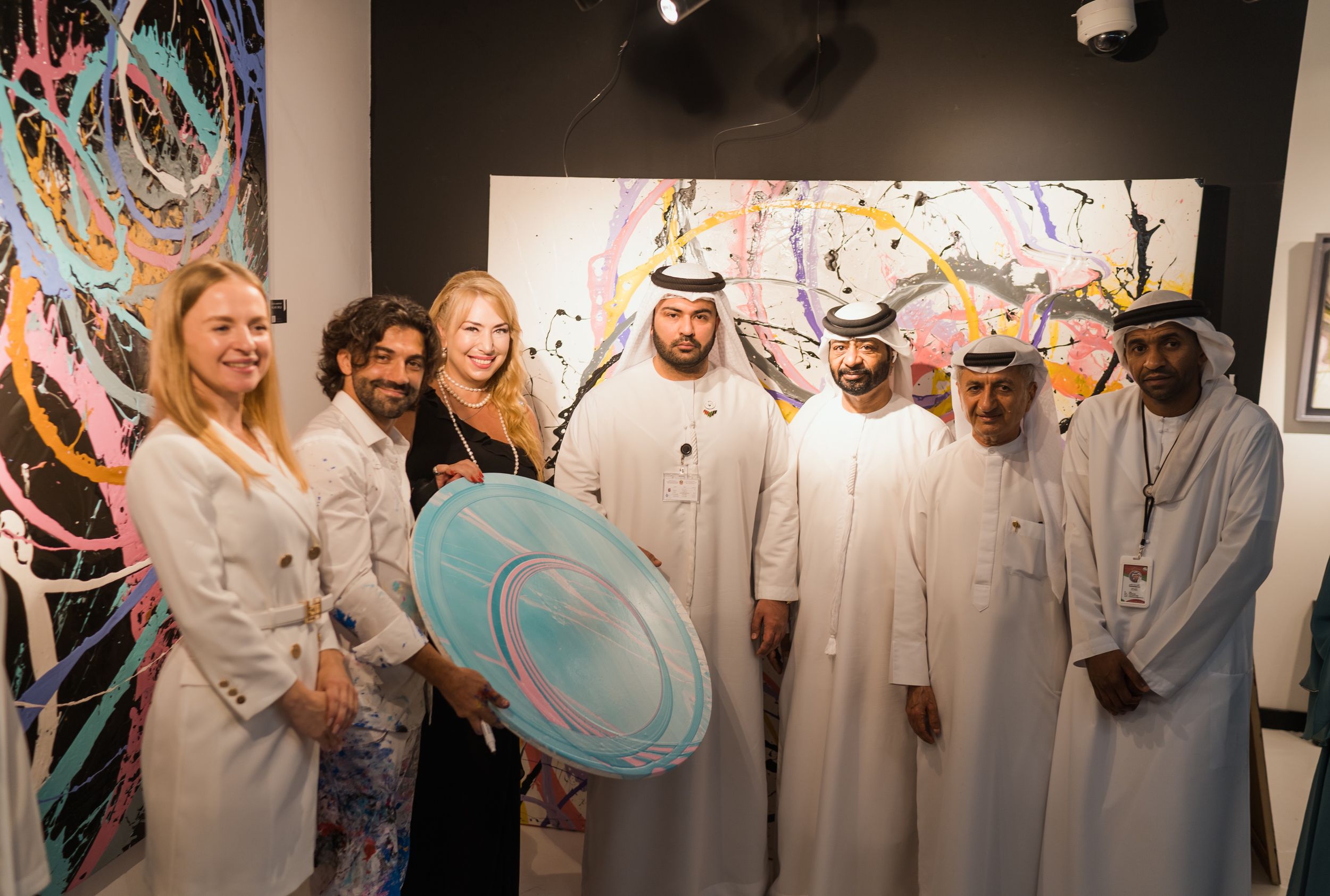Athr Gallery is showcasing the works of Ahaad Al Amoudi who has been observing and studying extensively yet with humor the process of change in the GCC in general and in the kingdom of Saudi Arabia in particular, Alamoudi’s body of work share an exploration of both the obvious and the obscure social and cultural conditions of contemporary Saudi Arabia, Alamoudi’s work amplifies the notion of the effects of globalization and questions identity in the kingdom through the socio-cultural product used in her works.
Additionally, there will be selected artworks from Mohammad Alfaraj’s (b. 1993 in AlHassa) first solo show, curated by Mayssa Fattouh for Athr Gallery.

Ghost of The Fallah, 2020
Video
The exhibition is a metaphor on the state of Alfaraj’s hometown and the world, an exploration of co-habitation of humans in a natural habitat, showing local self-contained agricultural practices confronted with mass extraction and extinction by the hyper industrialized era, radically disrupting and increasing the feeling of a precarious present. Based on the premise of the ongoing civilizational paradigm shift we are partaking in, with the backdrop of weather and climate influencing our existence, ranging from daily life in a rural setting to apocalyptic visions of the future where the capitalist machine is the usurper of nature. Here, Alfaraj reveals his implication in these debates through the instinctive act of storytelling in a sensorial installation across different bodies of works, comprising of a sculptural installation, photography and photomontage, sketches, a sound installation and two projections.

The Moon Falling in the Night’s Lap القمر في حضن اللیل, 2020 , 2020
Photography
When you look into the current socio-economic trends in the region, you notice an aspirational lifestyle has emerged in the Gulf, one based on positivity, efficiency and productivity. Its proponents circulate on social media, TV and YouTube changing the way that we interact at home, in public and at work. Positivity and productivity are now the markers of success and there are considerable efforts to mold society into a happy, efficient, productive one. What are the implications of applying the same strategies meant for individual positivity and “improvement” to the many?
Ahaad Alamoudi begins to answer these questions in her body of work, Heat Burns, addressing topics of hegemony, technology and power through the lens of the fast paced, societal changes. She witnesses society’s adaptation to these changes, questioning what is lost and gained through this process, observing how people navigate their way through transformation.

Heat 2, 2021
Mixed Media
Central to the iconography of Heat Burns is the symbol of the iron and the colour yellow. Al Amoudi sees the iron as a tool for action, creating change through heat and pressure. The Pantone Yellow overwhelms the show, and is seen in the works in the room, the multiple yellow thobes, and gym equipment and in the central video Makwah Man.
Makwa/Iron Man , 2020
Video/Film
The central work in the show is a video Makwah Man. On an immersive projection a man is depicted endlessly ironing metres of pantone yellow cloth in his pantone yellow satin thobe on top of a dune in the middle of the desert, reciting paternalistic, positive aphorisms.
Motion is the phenomenon in which an object changes its position over time; it is described in terms of displacement, distance, velocity, acceleration and speed. The Khaleej has been experiencing drastic modes of motion and transformation in recent years, and Alamoudi’s home of Saudi Arabia positions itself as the centerpiece of it all.
On top of that, speculative theories on Saudi Arabia’s future are emerging both inside and outside of the country. Many are initiating this movement through different motions of action, either by actively contributing in creating the change, or by participating and actualizing it into their daily lives. These actions are seen, and thoughts and opinions of them are constantly shared across different platforms both online and off.
The emergence of a post-internet culture and its relationship to cultural heritage is transparent in Alamoudi’s work. Her process acts as a way of filtering the influx of digital information into composed arrangements that merge the traditional and the novel, paired with an underlying sense of humor.
For more information visit: artbasel.com



